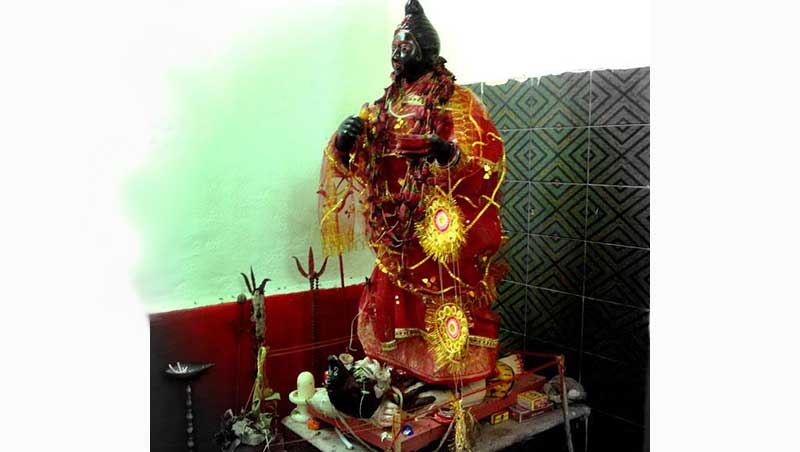
According to legend, long, long ago, there was a successful Bengali trader named Dhanapati Saodagar, from the family of Chand Saodagar of Manasamangal. His trade flourished through Adi Ganga to Sri Lanka with his fourteen boats. His son, Srimanta Saodagar also followed the trade route of his famous ancestors, extended up to Sri Lanka and established himself as a reputed trader. Though he was married to a girl named Ujjayini, Srimanta married again a Sri Lankan princes to maintain his strong hold in that country.
He constructed around 1800 temples throughout his business route, which included the twin temples, locally known as Jora Mandir, situated within the campus of the modern Garia Burning Ghat. These temples, one meant for Lord Shiva or Mahakal and another for Mahakali, were considered as built more than 350 years ago by Srimanta Saodagar, on the bank of the Adi Ganga, which once flowed beside the Boral burning ghat.

However, as the channel, known as the Adi Ganga, lost its navigability due to deposition of silt, Colonel Tolly in 1710 excavated a 27.36 km canal along the Adi Ganga, connecting River Hooghly with the Vidyadhari River. However, the course of the canal had to be deviated from the original course of Adi Ganga in places and at Boral, Tolly’s Nullah is half a kilometre away from the Adi Ganga.

The temples, located in the vicinity of the burning ghat, were constructed following the traditional ‘aatchala’ style of Bengali architecture, consisting of eight sloping roofs. Being a busy area, the deities in the temples were regularly worshipped and visited by hundreds of people regularly. However, due to lack of maintenance, they became dilapidated long back. The plaster has long been peeled off the structures, exposing the age-old bricks that started withering away. Unwanted vegetations had almost covered both the structures and in fact, the prop roots of a Banyan tree anchored and supported the very ancient temples from falling down.


Both the structures were declared ‘unsafe’ by the civic authority in the late1980s and following the merger of Behala, Garden Reach and Jadavpur with the proper city of Calcutta in 1984, the ownership of the temples passed on to the Calcutta Municipal Corporation. Around 2008, it was announced that, the heritage conservation wing of the Calcutta Municipal Corporation (CMC), which owns the temples, will undertake the task of restoring the temples.
It was promised by the civic authority that, unlike the Tripureshwary temple in Boral, which was restored privately and lost its originality in the process of renovation, the original architecture of these two temples will be preserved during the renovation.


Unfortunately, in the name of renovation and restoration, the responsible wing of the government has destroyed the heritage charm of the ancient structures. All the existing decorative ornamentations of terracotta and stucco were drastically erased from the outer surface of the temples, smoothed the surface with cement work and brutally painted the ancient temples in a garish colour. In fact, the ancient temples got a new lease of life in exchange of the aura of its past and now appear to be a pair of newly constructed structures.
